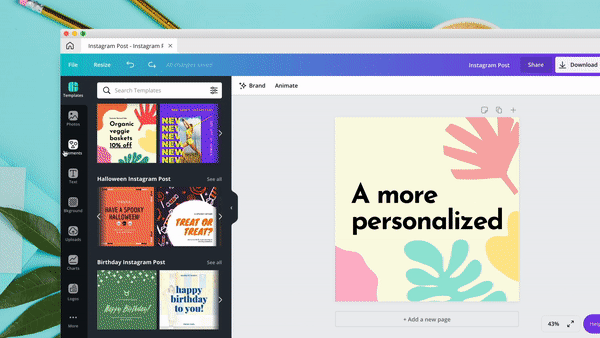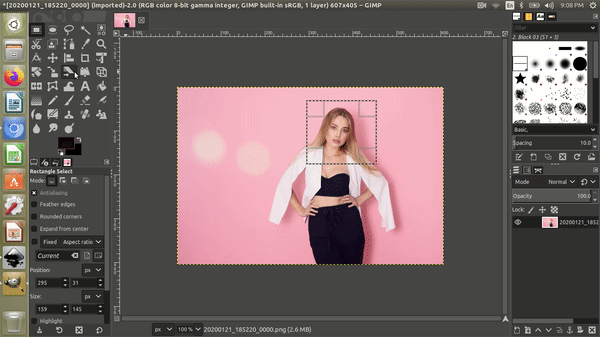
Marketing requires a lot of creativity. You need to be able to attract customers, who often grow tired of advertising, in new and exciting ways. One important way of doing that is by creating visually appealing promotional materials and online content. Graphic design is a crucial component of marketing. However, not everyone has a knack for design. Learning how to use new software can seem daunting and some people aren’t very artistic. If this sounds like you, don’t fret. Your marketing strategy isn’t doomed even if you can’t afford to hire a designer. There are plenty of apps and software that are beginner friendly. You’ll be able to make snazzy graphics in no time! You might even want to learn how to use more advanced software. Here is a guide to the best graphic design tools.

Canva
Canva should be used by anyone doing digital marketing. Even if you’re familiar with more powerful tools, you’ll find this user friendly app useful. Canva allows you to easily create infographics, attractive social media posts, and more. The app has ready to use templates, which allows you to quickly create graphics in a rush. These templates come in a variety of sizes that are perfect for creating Facebook headers, Instagram stories, posters, and presentations. Because it is easy for beginners to use and stylish enough to impress graphic design pros, Canva is one of the best graphic design tools you can use. Even better, it’s free! While you can purchase a subscription to Canva Pro or Canva for Enterprise, you can use most of Canva’s features without paying a penny.

Adobe Creative Cloud
Adobe provides some of the most powerful graphic design software on the market. You can utilize a wide range of tools by subscribing to Adobe Creative Cloud, which includes Photoshop, Illustrator, InDesign, Premiere Pro, XD, Acrobat DC, and more. For graphic design, it’s best to use Photoshop, Illustrator, and InDesign. Photoshop and Illustrator can be used to create images and graphics of various sizes. InDesign is great for formatting brochures, pamphlets, and other documents. While it won’t help you create snazzy graphics the way Photoshop and Illustrator will, Acrobat DC may also be useful if you need to create and format PDFs. Although they are powerful, Adobe’s softwares can be difficult to learn. Adobe Creative Suite isn’t the best for beginners, but if you want to become more serious about design, it’s worth taking the time to learn how to use it. If you also create videos and maintain a website for your business, you can get more out of your subscription by using Premiere Pro and XD. Business plans start at $33.99 per month.

Venngage
Venngage makes creating graphics for your business easy. They offer a variety of templates that are designed by professional graphic designers. They focus on presentation and promotional materials such as reports, brochures, flyers, and business cards. Their software is even equipped to help you design and format ebooks. Venngage is particularly useful for displaying data. You can import numbers directly from spreadsheets and make charts, graphs, and statistical summaries. Additionally, if you aren’t satisfied with a template, you can customize it or create your own from scratch. While Venngage offers a free plan, it’s features are pretty limited. Their premium plan is $19 a month and their business plan is $49 a month. If your company is small, the premium plan probably has everything you need. However, if you’re leading a larger team, it’s best to subscribe to the business plan, as multiple people can use it simultaneously.

Lucidpress
Lucidpress describes themself as a “brand templating platform”. You can use it to create a variety of printed materials and online content. It supports both RGB and CMYK color formats, so your content will look great whether it’s on a screen or on paper. Lucidpress’s strength lies in desktop publishing. While many graphic design softwares only allow you to create single page documents, you can create magazines or even books using Lucidpress. There are over 800 templates to choose from and customize. In addition, Lucidpress offers template locking, which helps prevent logos and other graphics from accidentally being stretched out of shape or otherwise altered. Although there is a free version of it, its features are limited so it’s best to get a subscription. Plans start at $5.95 per month.

GIMP
You need to be pretty tech savvy to use GIMP, but if you have the skills to use it, it’s a great tool. The Gnu Image Manipulation Program is a free, open source graphic design software. GIMP has a customizable interface and can be used for enhancing images, retouching photos, painting, and animation. They support advanced manipulation techniques and have a powerful set of painting tools. GIMP is great for programmers who are getting into graphic design. You can perform scripted image manipulation in a variety of programming languages, including C++ and Python. Furthermore, it can be used in workflows with other free software, such as Inkscape. It takes some skill to use GIMP, but its possibilities are endless. We highly recommend it to IT literate users.

Krita
If you like and are good at drawing, consider creating your own visuals from scratch. Doing so will add a personal touch to your brand. Krita is the best tool for those who have an artistic side. It is a free painting program that allows users to create digital illustrations. They have over 100 brushes, all of which can be customized by using the 9 brush engines. For those with shaky hands, there is a brush stabilizer. You can add text to your drawings via the text tool. Additionally, you can create high quality vector graphics in Krita; people who zoom in on your images will be able to see them clearly. Like GIMP, Krita’s possibilities expand if you’re tech savvy. You can create your own widgets in Python and use them with Krita.



